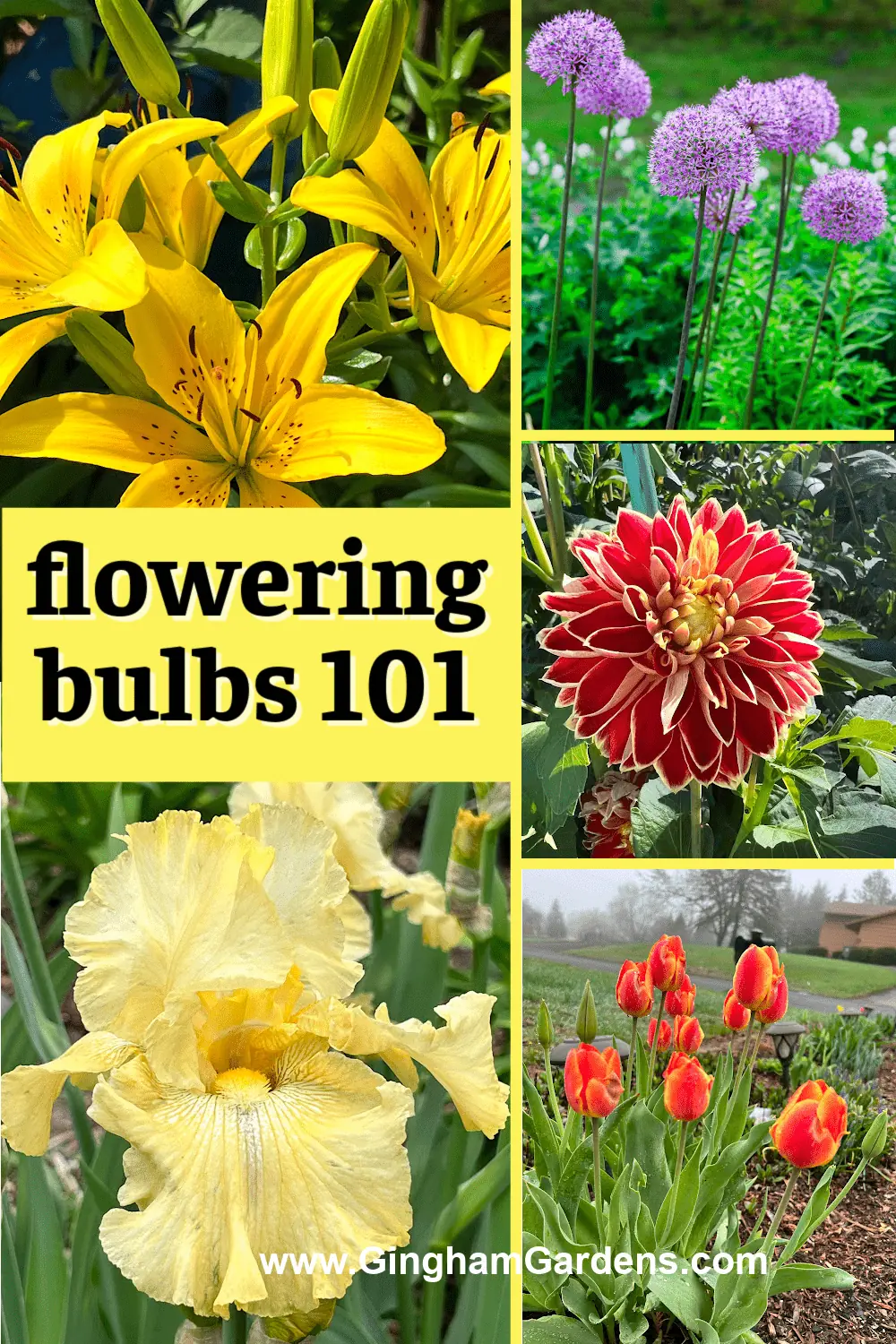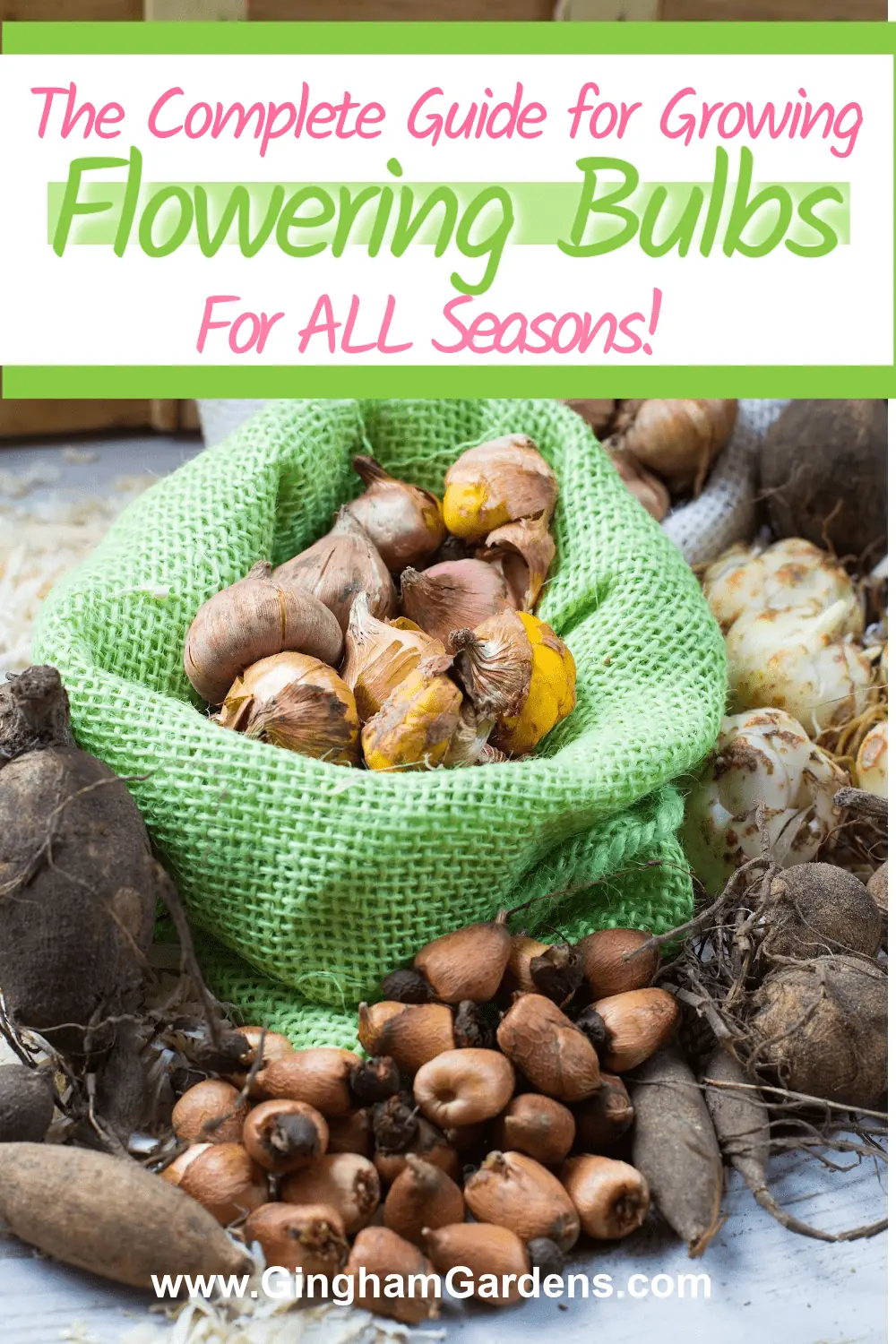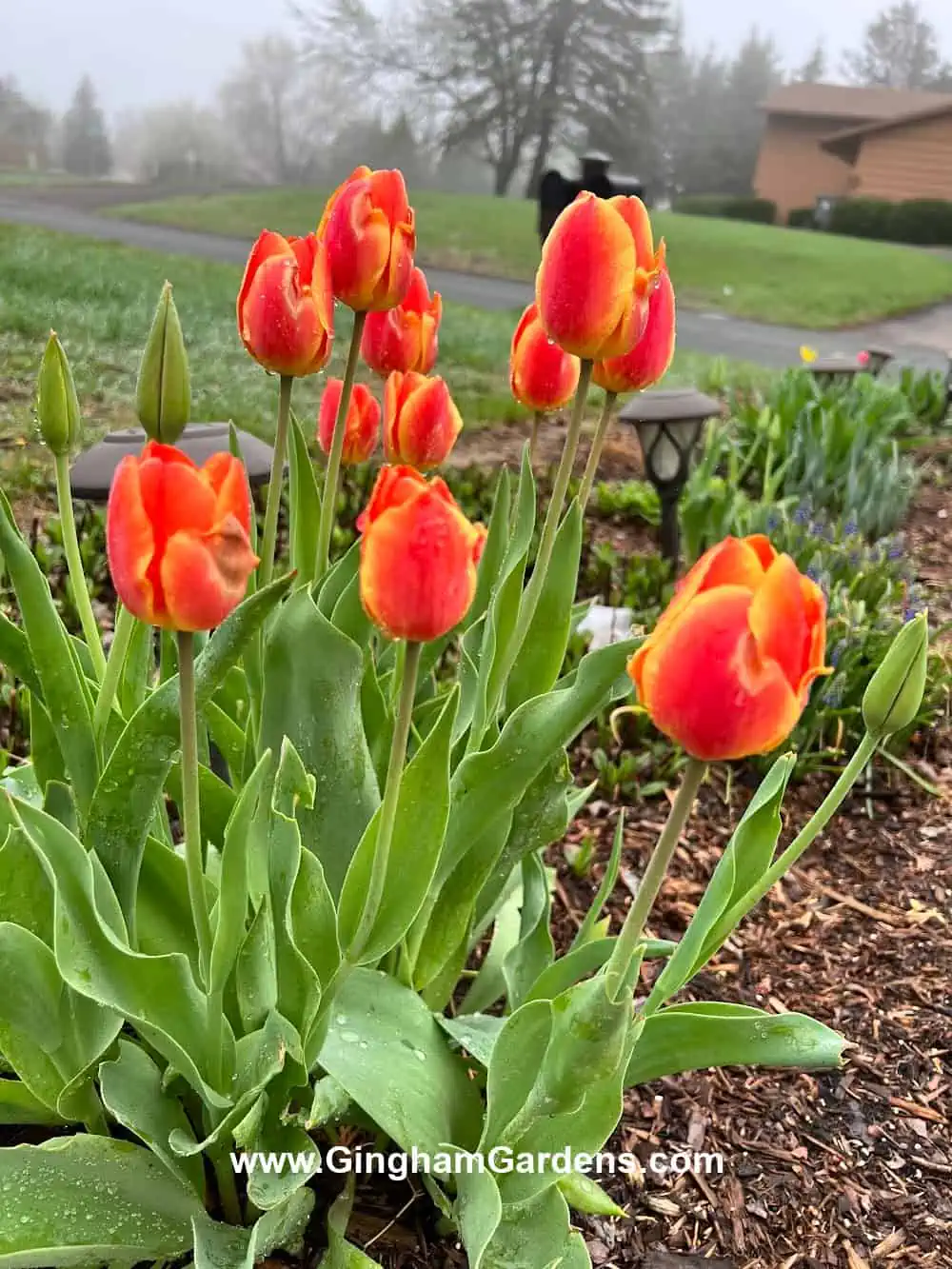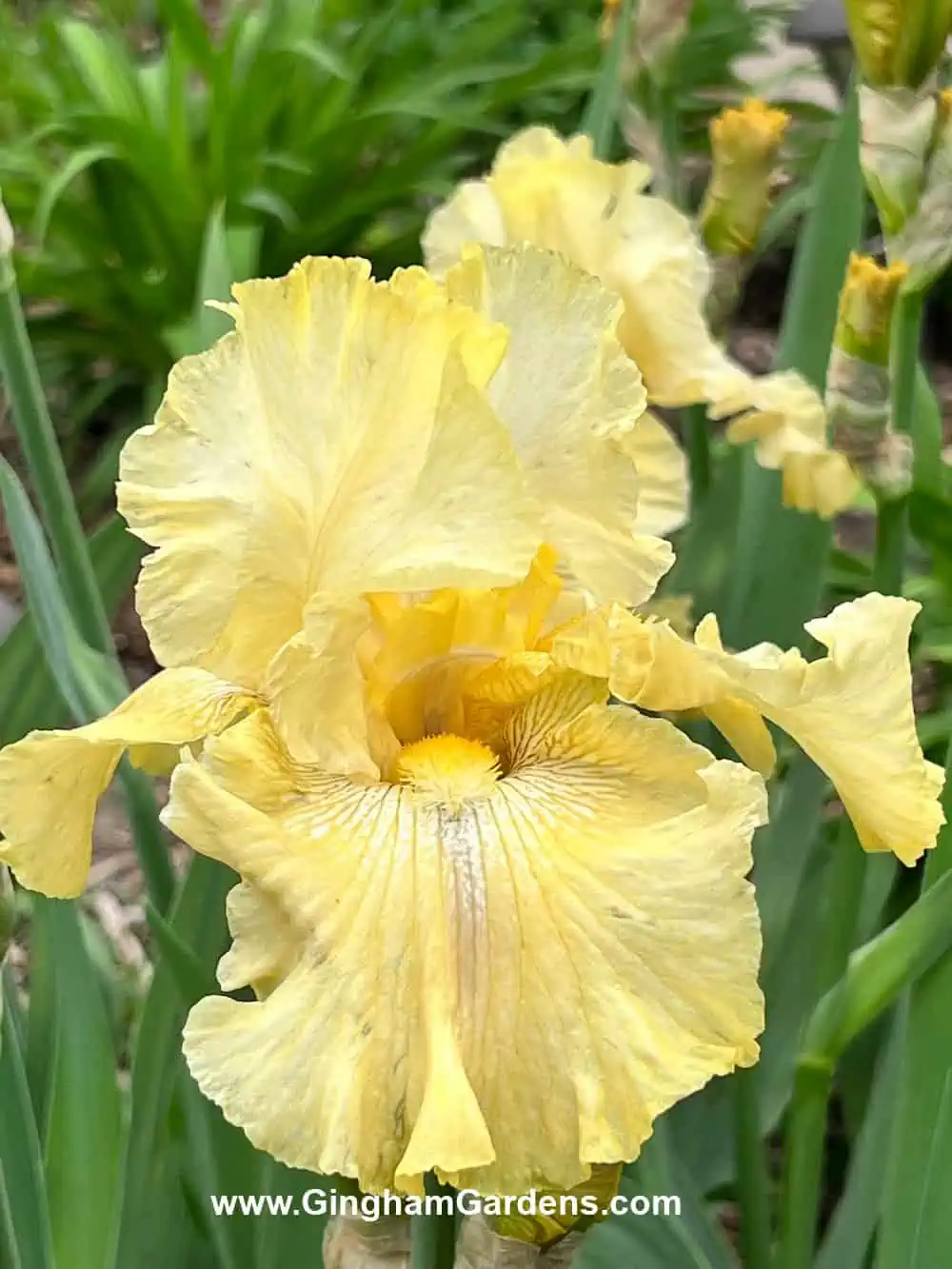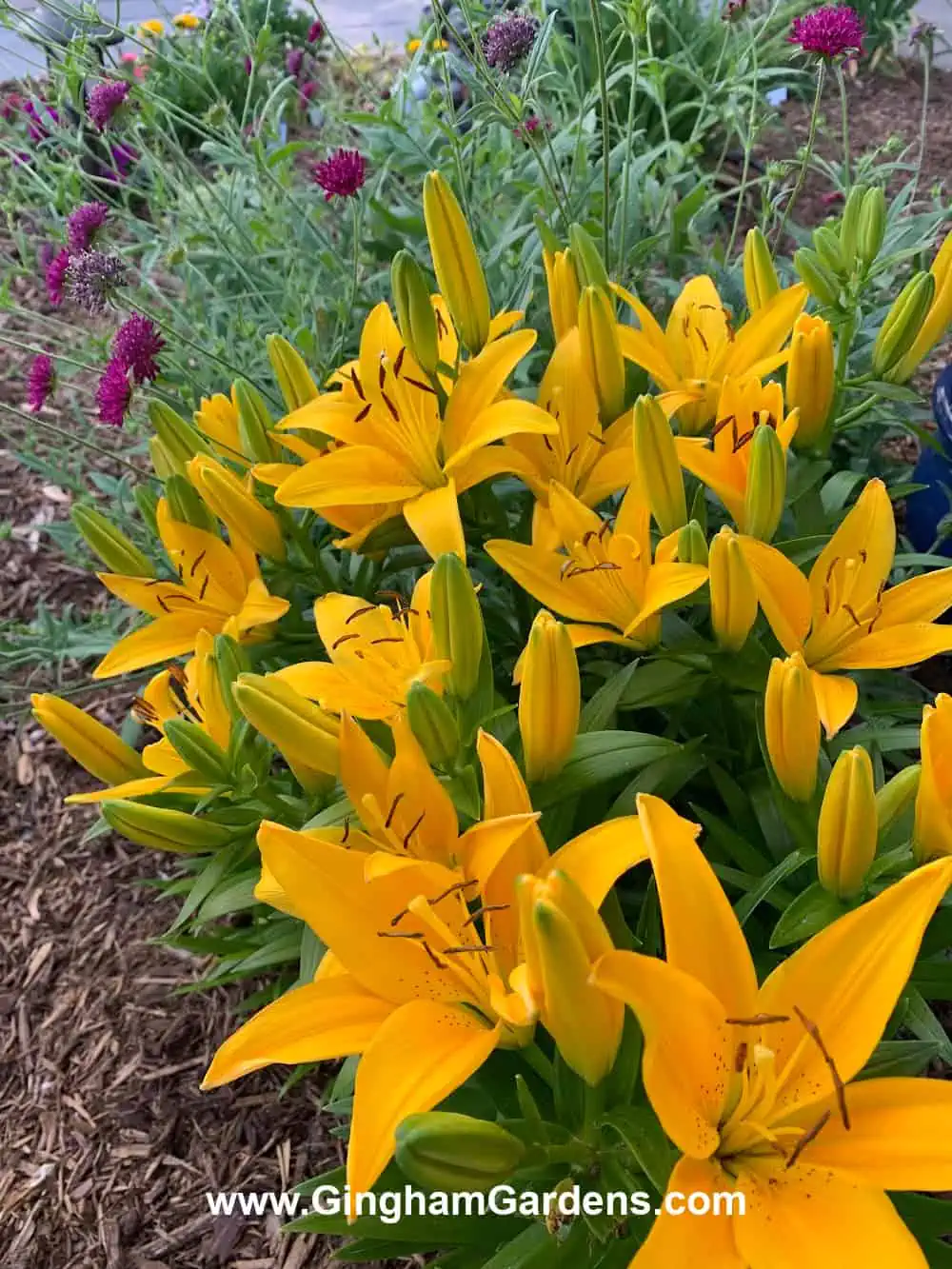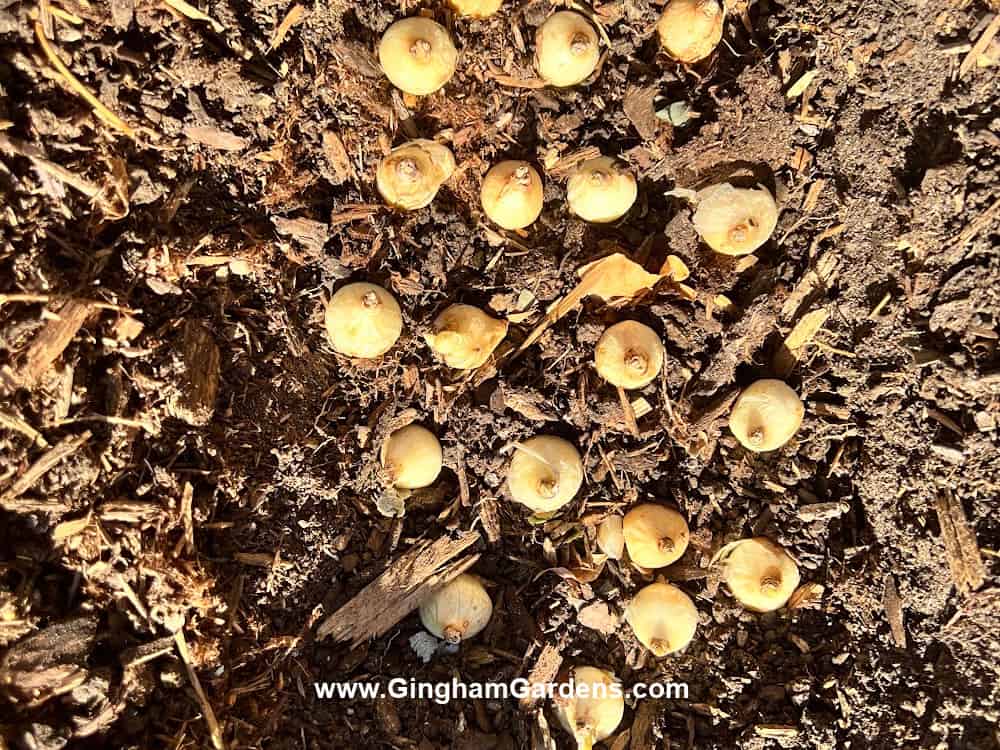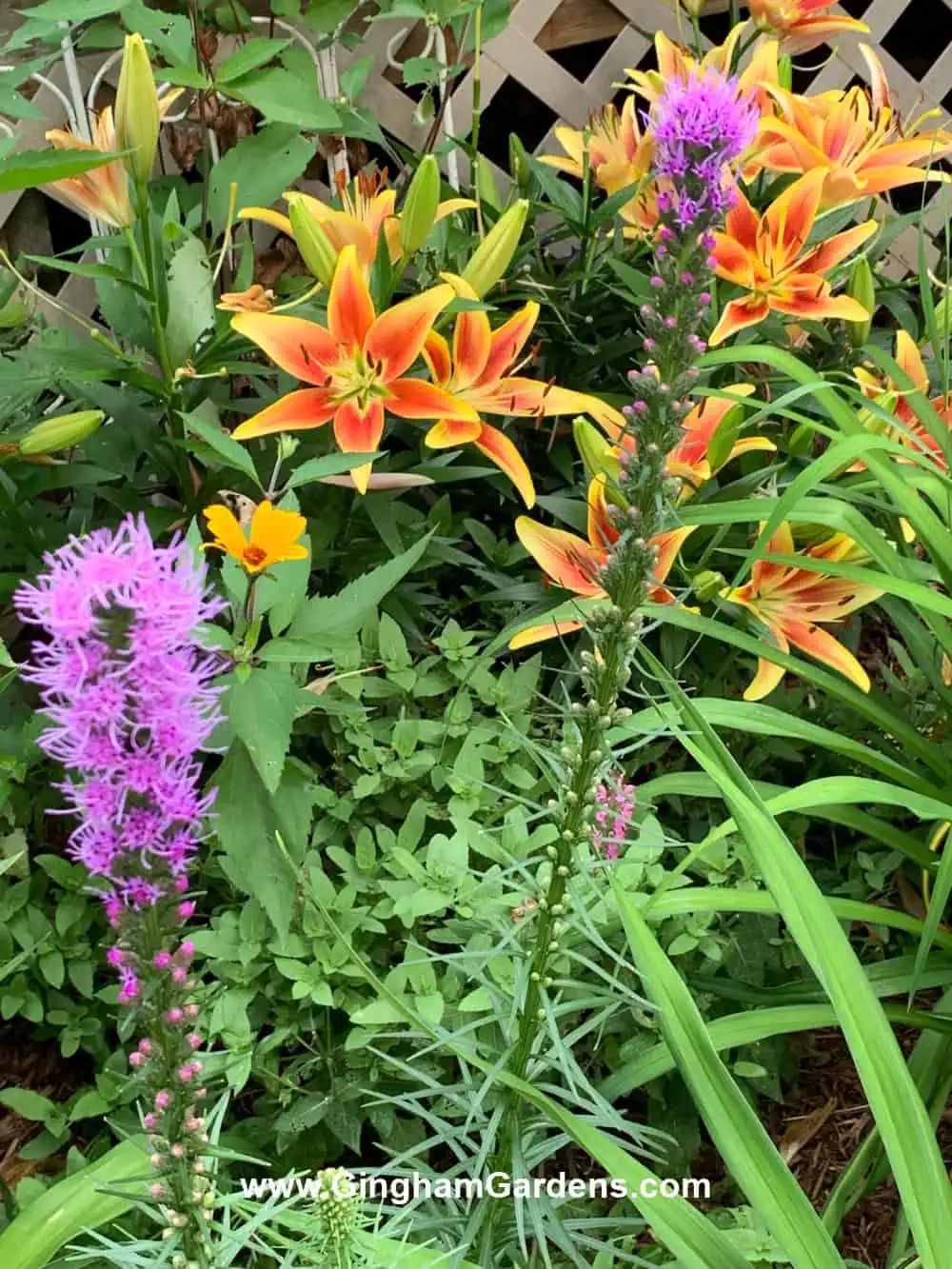Flowering Bulbs 101: Everything You Need to Start Growing
Plant flowering bulbs like daffodils, tulips, irises and lilies just once, and you’ll enjoy their colorful blooms year after year. Take a deep dive into bulb gardening with this Flowering Bulbs 101 guide to learn how to grow the most effortless and beautiful flowers every year!
Many flowering bulbs are perennials that often become like a family heirloom, lasting for decades with good care. I’ve heard so many stories from people who returned to the house they grew up in to dig up some irises or unique tulips. Because these plants continue to grow for so long, they quickly become a regular and beloved feature in your garden.
This post contains affiliate links. If you click on
one of the links and make a purchase,
I may receive a small commission at no additional cost to you.
See full disclosure here.
These bulbs are also incredibly forgiving. Even the most novice gardener will enjoy fabulous flowers year after year just by planting some bulbs once. They’re also the easiest flowers to harvest from your cutting garden, especially during the earliest parts of the year.
Flowering Bulbs 101: The Basics of Growing Flowers from Bulbs
Let’s break down the basics so you can understand what these bulbs are, how to grow them, which ones flower during which season, and more.
Save this post to Pinterest so you can come back to it later.
What is a flowering bulb?
Some perennial plants produce bulbs instead of just roots. These bulbs often look like an onion and can range in size from teeny tiny to quite large.
This bulb will stay alive when the plant dies back in the winter. The next year, when the soil temperatures rise, the bulbs will regrow to produce another season of beautiful flowers.
Many plants produce special root systems like bulbs that can be replanted for flowers year after year. Tubers, corms, and rhizomes are often included in lists of flowering bulbs because they have similar growing requirements. I’ll include both true bulbs and these alternatives to give you the full picture and more plants to choose from.
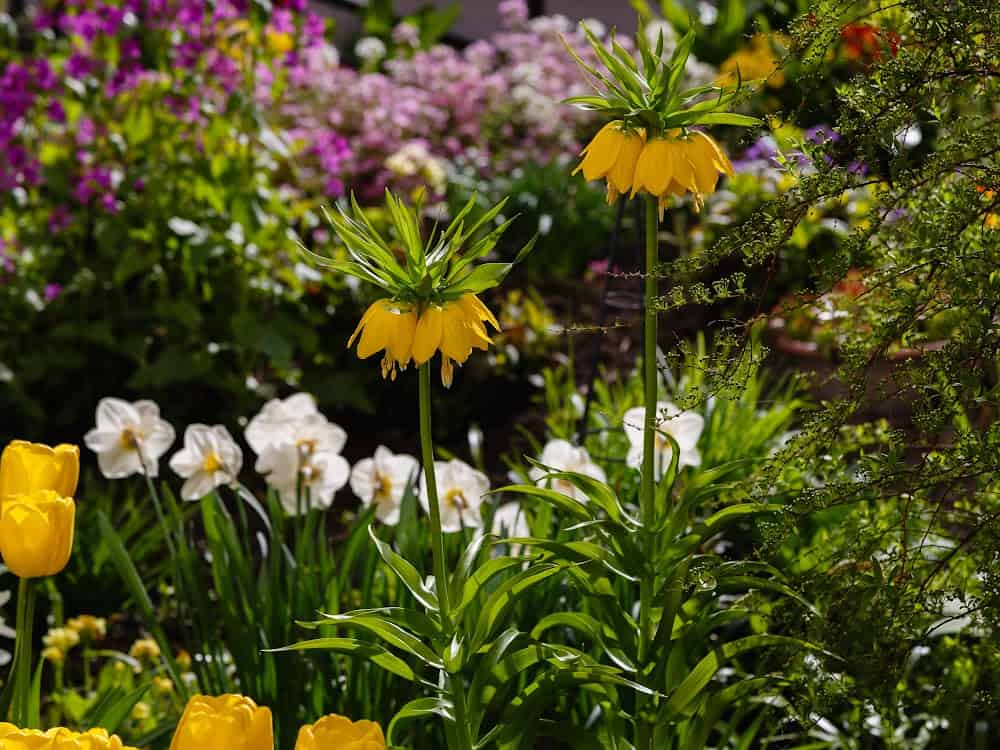
When do you plant flowering bulbs?
Since the most popular and famous bulbs produce spring flowers, most of us typically expect to do our bulb planting in the fall. However, you can plant bulb plants at different times throughout the year for beautiful flowers and foliage every season.
Of course, spring-blooming flowers must be planted in the fall. This time allows the dormant bulbs and roots to settle into the ground and develop roots before the ground freezes.
However, summer-flowering bulbs, like dahlias and gladiolus, are planted in the late spring or early summer to avoid damaging freezes. If you have a short growing season, learn how you can get a head start by starting your bulbs indoors.
Flowering Bulb Seasonal Guide
Ready to get planting? Let’s dive into some of the best bulbs for beautiful flowers throughout the year! I’ll explain the different flowers, when to plant them, and more.
Spring Bulbs
Spring-flowering bulbs are the most iconic and well-known. They’re the most colorful sign of spring and a welcome sight after a long winter.
For spring bulbs, you need to plant in the fall for flowers the following spring. Choose a site with good drainage and either full sun or partial shade.
The most popular spring bulbs:
- Lily of the Valley (grown from a tiny rhizome called a pip)
- Virginia Bluebells
- Crown Imperial (fritillaria imperialis)
- Snowdrop
- Crocus
- Tulips
- Daffodils
- Grape Hyacinths
- Hyacinth
- Iris
- Allium (different varieties bloom at different times)
- Anemone
- Ranunculus
- Agapanthus
Summer-Flowering Bulbs
For beautiful blooms in your summer garden, plant your summer bulbs or tubers in early spring or summer.
These should be planted in well-draining soil. Wait to plant until the soil dries out to avoid rot and mold.
Spring-planted bulbs for summer flowers include:
- Anemones
- Dahlias
- Gladiolas
- Lilies
- Liatris
- Calla Lilies
- Canna Lilies
- Ranunculus
- Crocosmia
- Begonias
- Spider Lily (Lycoris)
Depending what hardiness zone you are in, some of the plants on this list are tender, meaning they must be dug up before the winter for consistent flowers the following year. They may be able to overwinter in places with milder climates, but people with harsh freezes like me will need to store them safely indoors.
If you’re a dahlia lover, or would like to learn more about growing dahlias, be sure to check out Growing Dahlias: An Easy Guide for Home Gardeners when you finish up here.
Pro Tip: Plant tender bulbs in containers. That way they are easier to overwinter.
Although not flower bulbs, I don’t want to leave out caladium. No flowers necessary when you’re a gorgeous foliage plant like caladium. Elephant ears are another non-flowering bulb that deserve a place in your summer garden.
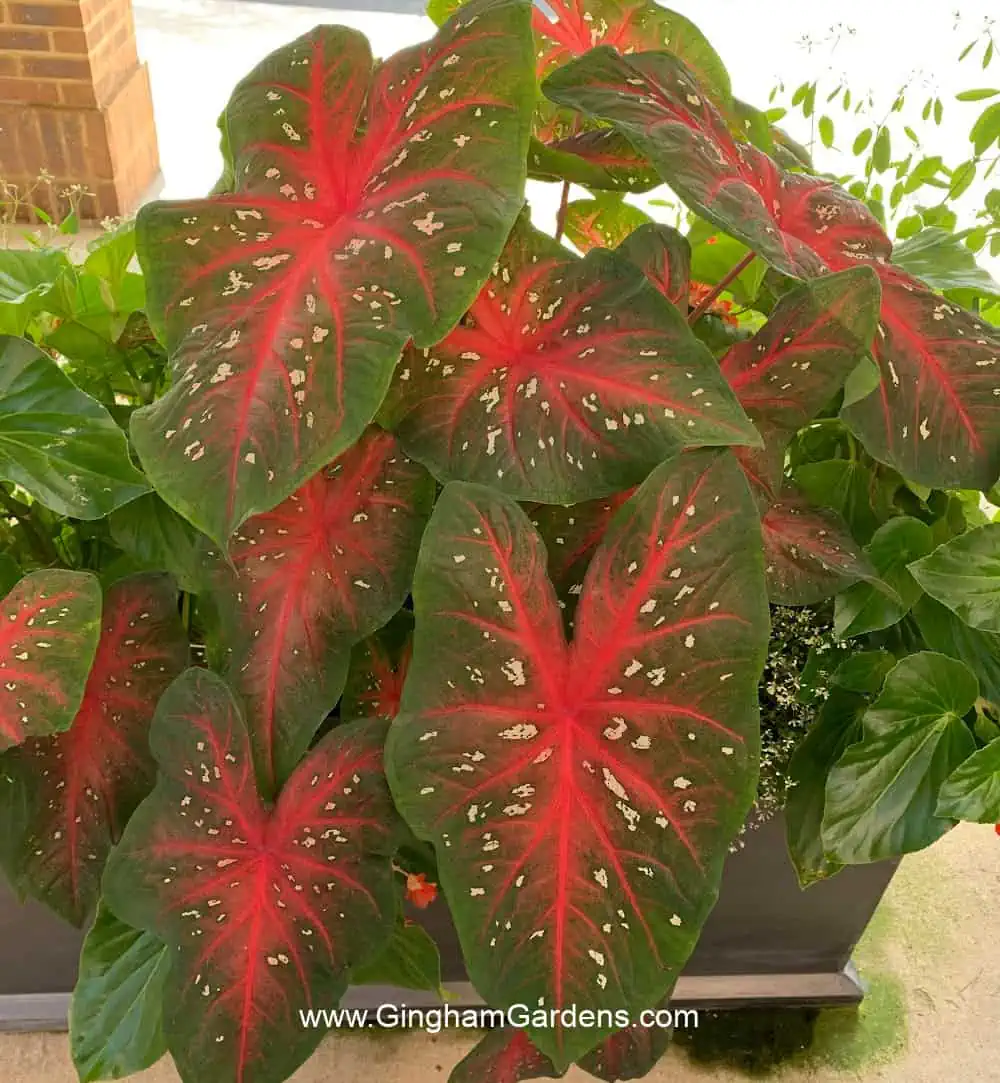
Fall Bulbs
These unique bulbs add gorgeous color to your fall garden. The most popular fall bulbs are special fall-bearing versions of your favorite spring bulbs.
Depending on your hardiness zone, these flowers may act as annuals; they must be stored in a dry place and replanted yearly. In warmer climates, they will often overwinter and grow like perennials.
Late Summer or Fall-flowering bulbs:
- Dahlias
- Gladiolas
- ?? Lady Lilies (Nerine) – Look them up, I can’t put the name here.
- Colchicum (Autumn Crocus)
- Sternbergia (Fall Daffodil)

Winter Bulbs
Although we often think our favorite early flowers are spring bulbs, many bloom in the winter! For example, snowdrops will burst out of the soil as early as January in some areas. Some of the hardy bulbs from fall will continue to flower into the winter.
These are some of the best bulbs to plant for early spring or late winter blooms:
- Snowdrop
- Crocus
- Anemone
- Winter Aconite
- Early Daffodils
- Amaryllis (only indoors for colder zones).
Read your packaging closely. Look for “late” fall bulbs or “early” spring bulbs.
Can you force flowers to bloom in the winter?
Winter blooms are especially confusing because there are some kits for “winter bulbs” sold at garden stores. The bulbs for amaryllis (learn how to grow them year-after-year here), hyacinth, and paperwhites are refrigerated for several months to be tricked into believing it’s spring. They can be grown indoors, but would likely die if planted outdoors in frigid temperatures.
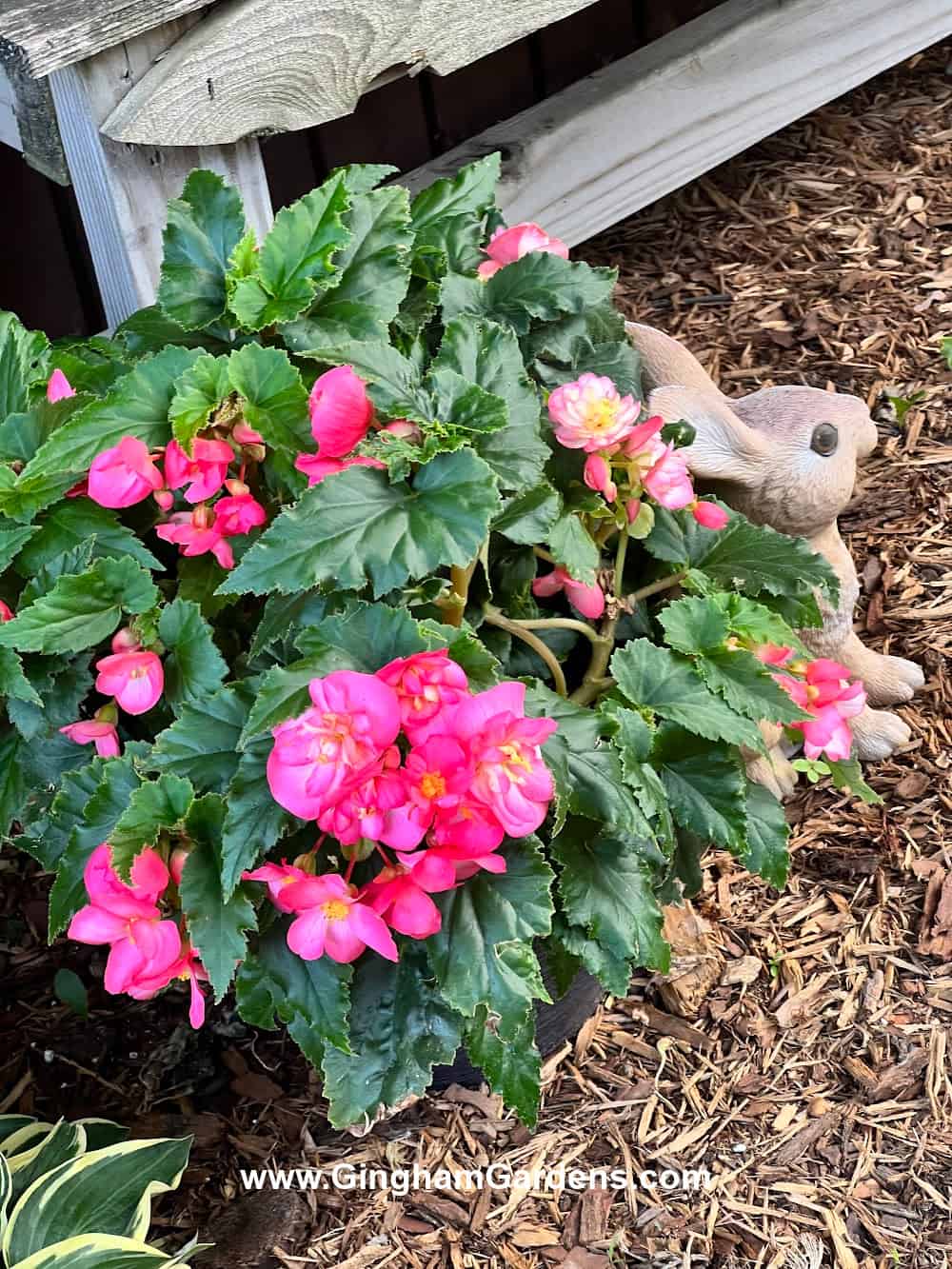
Hardy vs Tender Bulbs
We’ve touched on this topic, but let’s dive deeper to ensure you’re only buying bulbs that work for you.
Hardy bulbs include your favorite spring blooms. These traditional true bulbs require a cold spell as part of their natural lifecycle. Their new growth is triggered by a cold period, usually 2-4 months long. These bulbs won’t produce without cold and emerge after the winter.
Examples of hardy bulbs include daffodils or narcissus, crocus, hyacinth, etc.
Tender bulbs may overwinter in warmer areas but struggle to survive harsh winter freezes. In colder areas, they usually need to be dug up and then stored in a dry place until the temperatures rise. Learn how to overwinter tender plants here.
Examples of tender bulbs include gladiolus, dahlias, ranunculus, Calla lilly, begonias, etc.
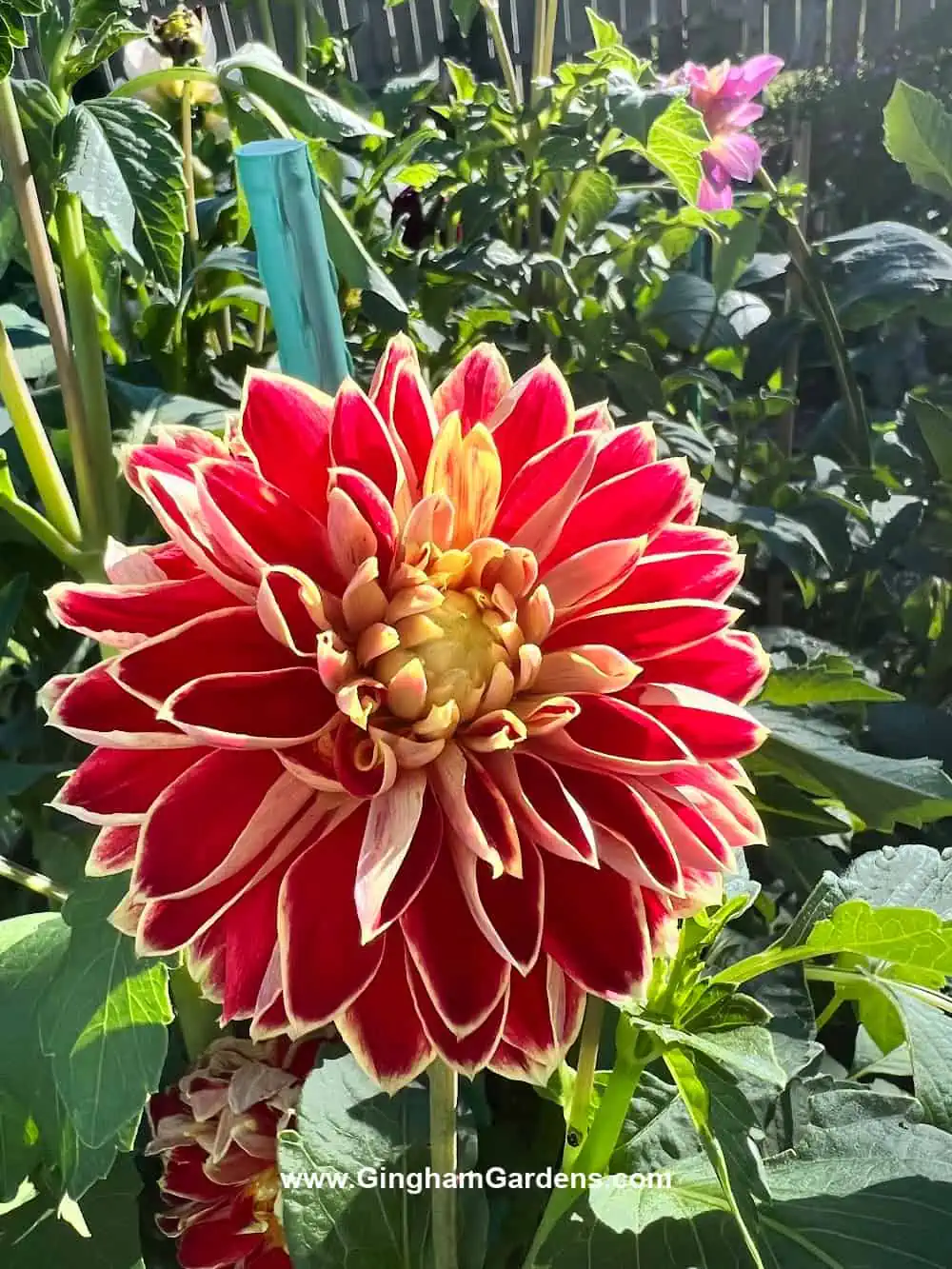
Do bulbs just flower once?
Although there are many different types of flowering bulbs, individual bulbs will only flower once per year.
Hardy bulbs, like tulips and daffodils, require a long period of cold winter weather and enough light before producing more flowers.
Other types of roots, like tubers and corms, usually begin to flower several months after planting.
However, you can stagger plant different varieties of the same plant to have flowers for longer. Look for “early” and “late” versions of your favorite flowers for months of color. Lilies are a good example of this.
If you love easy-to-grow plants that return year after year, try adding these classic perennials to your garden to compliment your bulb flowers.
How to Plant Flowering Bulbs
Depending on the type of bulb and its bloom time, you’ll need to plant it during the appropriate season.
All bulbs have specific planting conditions and recommendations, but you can usually follow the general tips listed below.
The best time to plant spring bulbs is in the fall before the winter. For summer or fall flowers, it’s a good idea to plant in early spring after the last chance of frost. Fall and winter flowers are usually planted either during the late summer or early fall.
- Choose an area with good, loose soil that drains well. Many bulbs prefer can tolerate full sun or partial shade.
- Clear out any mulch covering the soil surface.
- Dig a hole or big trench or hole 2-3 times deeper than the height of the bulb.
- For best results, amend your soil with compost and bulb fertilizer (although optional, I highly recommend this stuff).
- Place your bulbs with the roots down and cover them with soil and mulch.
- Water well when planting to encourage root growth.
Should you water spring bulbs?
Although you should water your bulbs right after planting, they only need to be watered again once you see signs of growth. Water at least once a week while they’re blooming unless you get good rain. Do not water when the plants are dormant.
How do you take care of spring bulbs after flowering?
After your flowers finish blooming, trim away the spent flower stem. This will redirect the plant’s attention to growing strong roots instead of trying to produce seeds. Let the leaves die back naturally before cleaning up the plant.
Where is the best place to buy flowering bulbs?
You’ll find flowering bulbs for sale in many places, including your local garden center, Costco, and online garden retailers like Eden Brothers.
Although these bulbs are easy to find, take a good look at the bulb size and quality before purchasing. Avoid dried-out, leathery bulbs or bulbs with any signs of mold or rot. Some bulbs, like irises, will be labeled as bare root perennials, meaning they will return year after year.
Some nurseries sell specific blooms that only last for a year or two. This is often the case with tulips. Fortunately, you can look for “naturalizing” or “perennial bulbs” that will come back again in future years.
Clearly, there are so many fantastic flowering bulbs you can plant once and enjoy for years (or dig up and replant every summer)! Bulb gardening is an excellent investment, and I hope this quick Flowering Bulbs 101 guide helped you get the information you need to get started.
Happy Planting!
Joanna
More Great Things on Gingham Gardens
Sign up to receive our weekly newsletters full of gardening tips. You’ll also get access to our Gardening Resources Library and all our helpful gardening printables.
More places to find Gingham Gardens:
- Visit Gingham Gardens on Pinterest.
- If you’re on Facebook, Gingham Gardens is also on Facebook.
- Stop by Gingham Gardens’ Amazon store!
- Love Etsy? Come see us on Etsy too.
Save a pin to your gardening board on Pinterest, so you can remember this post later:

